’Tis the season of giving thanks for the gifts we have received.
While most of us appreciate the importance of gratitude, we typically give little thought as to how we express it. We don’t stop to ask: “How should I give thanks? What is the best way to show my appreciation?”
The importance of the manner in which we express our gratitude is embodied in the very word “thanks.” As the German philosopher Martin Heidegger observed, the word “thank” is etymologically similar to the word “think.” “To think” in German is denken while “thanks” is danken.[1]
Similarly, the Old English noun for “thought”—thanc or thonc—denotes “a grateful thought,” while the verb “to think” (thencan) is the catalyst for those thoughts. But there is also an element of “gathering” in the word thanc, of storing in our minds the profound feelings of gratefulness we have experienced. Indeed, the word “memory” originally contemplated devotion: “a constant concentrated abiding with something.”[2] Thus, the connection between thinking, thanking, and memory suggests that genuine gratitude is the product of serious reflection and speaks volumes about what we value.
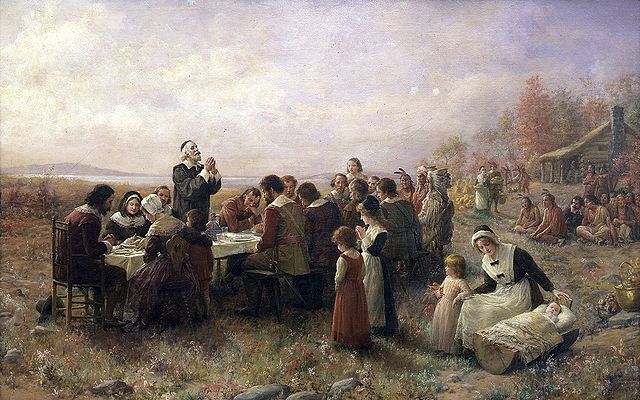
But what if we are the recipients of a gift we clearly do not deserve, one that is more valuable than all the wealth we could possibly amass in our lifetime? What could we possibly do or say to properly show our appreciation? My study of the Parable of the Sower, along with an experience I had as a missionary in Chile, suggests one possible answer.
Most of us are familiar with the sower parable, which appears in different forms in each of the synoptic gospels and was part of the Savior’s sermon on the Sea of Galilee.
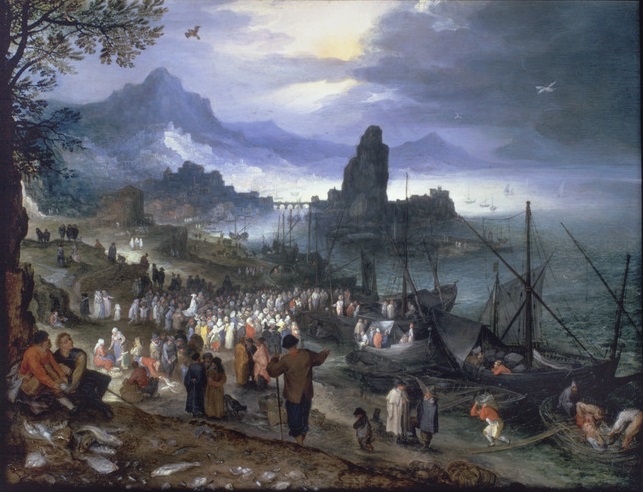

As Mark tells it, a farmer sows some seed that falls upon soil of varying quality. Some landed on the roadside but was quickly consumed by birds. Other kernels came to rest on rocky ground, but died shortly after germination because its roots were unable to fully develop. And a few seedlings fell among thorns and were choked before they could produce grain. But those that landed on good ground “brought forth grain, growing up and increasing and yielding thirty and sixty and a hundred fold.” Mark 4:3-8 (NSRV).
The text at this point abruptly interjects something peculiar: a discussion Christ ostensibly had in private with his disciples later in the day where he asks them if they understood this story. They did not, so he gives them this allegorical explanation.
“The sower sows the word.” The birds who gobbled up the seed on the roadside were Satan, who “takes away the word that is sown in them.” The ones sown on rocky ground are those who initially embraced the gospel but fell away when they experienced “trouble or persecution.” The ones planted among the thorns are those choked by “the cares of the world, and the lure of wealth.” Lastly, those sown on the good soil accept the gospel, “and bear fruit, thirty and sixty and a hundredfold.”[3]
This interpretation is problematical for several reasons. First, the analogies made are internally inconsistent. For example, does the seed symbolize “the word” or “people”? It’s hard to tell. Also how could this audience, in the early stages of Christ’s ministry, have possibly divined this allegorical construction? No farmer in his right mind would expect seed to germinate on a path, in the weeds or among rocks. Further, not even his disciples knew what he was talking about—and they, we are told, had previously been given “the secrets of the kingdom of God”![4]
For these, and several other reasons, most biblical scholars believe Christ never said these things.[5] Rather, it appears this allegory was added to the parable at a later time by the early Christian churches. Its meaning was treated as a “mystery,” understood only by a chosen few, and was used by ecclesiastical officials to explain why some sheep were leaving the fold (e.g., persecution) and why missionary work was faltering.[6] Such changes to the books of the New Testament were not uncommon, especially prior to the canonization of the Gospels, and were often made to advance a particular doctrinal or historical perspective.[7]
But Christ was not trying to conceal anything. His parables were addressed to all and could be understood by all. This does not mean they were devoid of complexity, yielded simple answers to complex questions, or that everyone was willing to listen. But without exception, they rewarded every diligent and sincere student of the Savior’s words with a deeper understanding of his gospel. No Dick Tracy decoder ring required.
So, what is the meaning of the parable of the sower? Consider first, the land. It was a mixed bag—which was also true of the land left for the residents of Palestine after the Romans had appropriated the best fields for themselves. But the behavior of the sower is not that of a prudent farmer. He’s throwing seed around like confetti, with no regard for its cost. Even stranger, is its quality. The yields it produced were extraordinary! Thus, the focus of this parable is on the reckless generosity of the sower—the grace of God—and results that are rich beyond imagination: the very bread of life, the gospel of salvation. This is a theme the Savior revisits frequently, such as in the Parables of the Mustard Seed and the Leaven.
But what happens if the sower can find no good ground for planting? This happened for a time during the Dark Ages and in countries where preaching the gospel was forbidden. And fertile soil for the gospel can suddenly become scarce for other reasons, as I discovered while on my mission.
In September 1972, I left my home in Urbana, Illinois to for my two-year assignment in Chile. I always chuckle when people ask me which Chilean mission I was sent to. At that time, there was only one for the entire country.
During my first year in the field, we struggled to find anyone interested in listening to our message. And baptisms were almost as rare as unicorns. But during the second year, something miraculous happened: people in virtually all parts of the country began to fill the pews of our chapels.
Actually, there wasn’t a miracle. There was a revolution.
On September 11, 1973, the Chilean military, led by General Augusto Pinochet, staged a coup, forcibly removing President Salvador Allende from office and taking control of the government. On the day of the takeover, I was stationed in the heart of Santiago, living with my companion on the fourth floor of a large home located next door to the U.S. embassy.
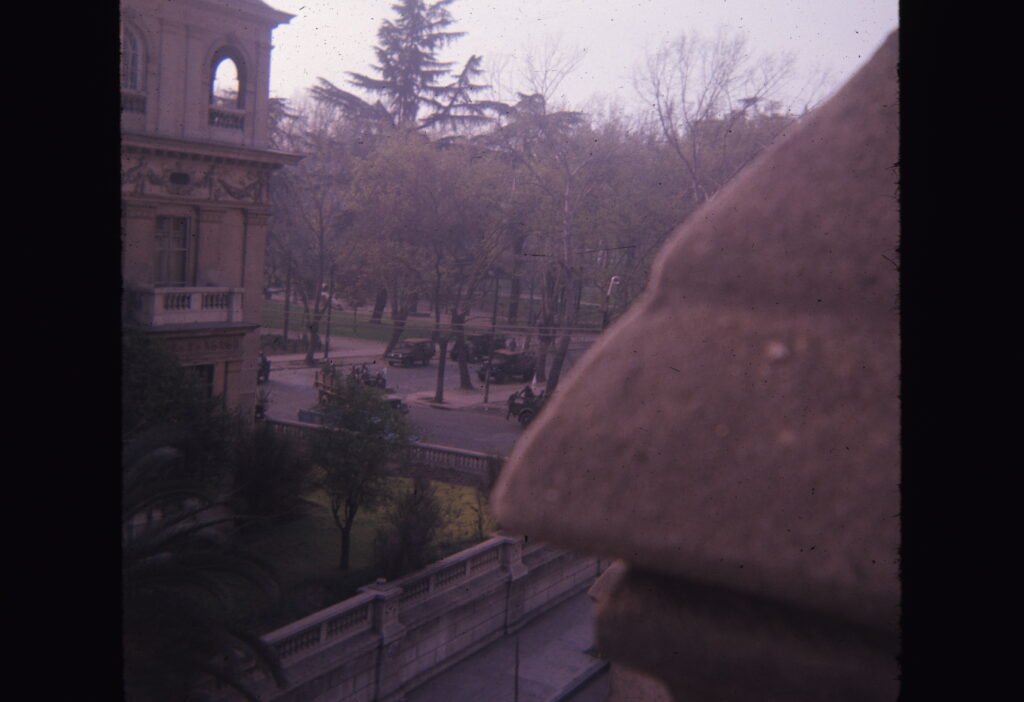
Chilean military assigned to protect to the U.S. embassy on the morning of the coup (photo by E. Facer)
Around the middle of the morning, two Hawker Hunter jets flew directly above us en route to dropping multiple incendiary rockets on La Moneda, an immense Presidential Palace, just a dozen blocks from where we lived.

Hawker Hunter jet en route to its target—La Moneda—on the morning of the coup (photo by E. Facer)
From our vantage point on the fourth floor, we could see the smoke from the fires in La Moneda triggered by the ordnance launched by the jets.

Smoke from La Moneda after the Hawker Hunter jets dropped their ordnance (photo by E. Facer)
After fierce fighting, Allende was found dead (he was either killed or committed suicide), along with some of his compatriots in La Moneda. The rest surrendered.
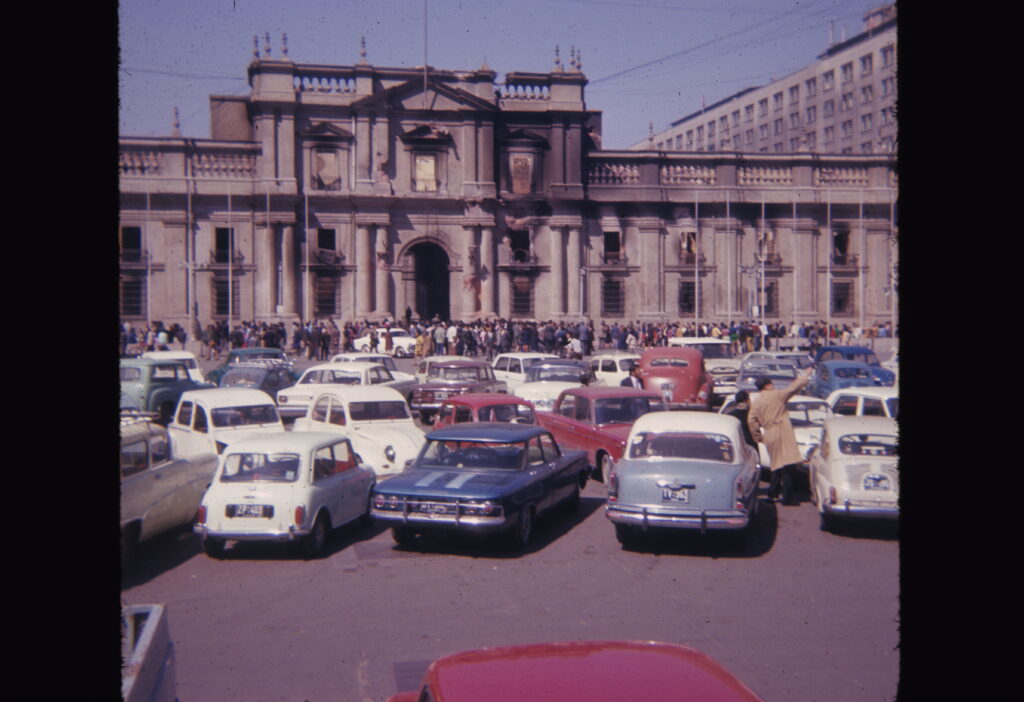
La Moneda approximately ten days after the coup (photo by E. Facer)
Though it took several days to mop up the remaining pockets of resistance—including a gun fight with a pro-Allende sniper on the street where we lived—the military was able to swiftly gain control of the country without incurring or inflicting large casualties.

Armored vehicles dispatched to take out the sniper who lived in the home sporting the Chilean flag on the balcony (photo by E. Facer)
What prompted the military to act? Chile had been a functioning democracy for almost 50 years. What went wrong?
Allende, an avowed Marxist and socialist, was elected president in 1970 with only 37% of the vote. Neither of his two opponents, both Christian Democrats with similar views, was willing to drop out of the race. His economic policies were disastrous, resulting in chronic food shortages, triple digit inflation, and rapidly declining economic output.[8] This inevitably led to heightened political tensions, a breakdown of democratic norms, and frequent, and often violent, public protests. While in Chile, I first became “acquainted” with tear gas and water cannon (wrong place at the wrong time).
Simply stated, there was only one thing on the mind of Chileans during this time: survival.
The military successfully restored order, and, with the help of some economists from the University of Chicago, was able to increase production, reduce inflation, and rebuild commerce. The Pinochet regime, however, was repressive. Military officers sympathetic to Allende were purged, cabinet ministers were assassinated, many Chileans were tortured and killed, and opposition political parties were banned. A new constitution was eventually adopted and democracy restored, but not until 1990.
Nevertheless, most people felt more safe and secure since they were no longer confronting a total collapse of their nation’s economy—and their lives. As a result, they had time for other pursuits, including matters of faith, which accounts, in large measure, for the church’s explosive growth in the succeeding years.
People, I discovered, generally have little time for or interest in religion when they are constantly preoccupied with matters of survival or threats to their safety. While Christ taught, “man does not live by bread alone,” he knew that, without bread, people die. So he provided his audiences with food (e.g., bushels of bread and fish) when he saw they were hungry; and he even contributed wine to a wedding celebration. He understood the inviolable connection between the temporal and the spiritual.
If there is no fertile ground where the sower can plant his seeds, the earth will produce nothing. He depends on us to create the necessary arable land. Christ conveyed this message to Peter when, after his resurrection, he instructed him to “feed my sheep.” The Savior, I believe, was speaking both metaphorically and literally. The spiritual needs the temporal in order to germinate and grow. When we feed the hungry, care for the sick, and shelter the homeless, we make that possible.
Thus, both “thinking” and “thanking” occur when we imitate the Savior in our giving. This, I believe, is how we show genuine gratitude for his abundant grace and infinite atoning sacrifice.
Happy Thanksgiving.
[1] Margaret Visser, The Gift of Thanks, (Houghton Mifflin Harcourt: New York, 2009), p. 234.
[2] Martin Heidegger, What is Called Thinking?” trans. J. Glen Gray (Harper Perennial: New York, 1976), pp. 138-139.
[3] Mark 4: 14-20. (NSRV).
[4] Mark 4: 11 (NSRV).
[5] Dale B. Martin, New Testament History and Literature, (Yale University Press: New Haven, Connecticut, 2012), p. 112; Frederick H. Borsch, “Waste and Grace: The Parable of the Sower,” Historical Magazine of the Protestant Episcopal Church, Vol. 53, No. 3, (September, 1984), pp. 199-208.
[6] Helmut Koester, “Recovering the Original Meaning of Matthew’s Parables,” Bible Review, June 1993), available from Bible History Daily.
[7] Bart D. Ehrman, Misquoting Jesus: The Story Behind Who Changed the Bible and Why, (Harper: San Francisco, 2005).
[8] Even those scholars who support socialism thought Allende was incompetent. See, e.g., Paul N. Rosenstein-Rodan, “‘Why Allende Failed,” Challenge, Vol. 17, No. 2 (May/June 1974): pp. 7-13.
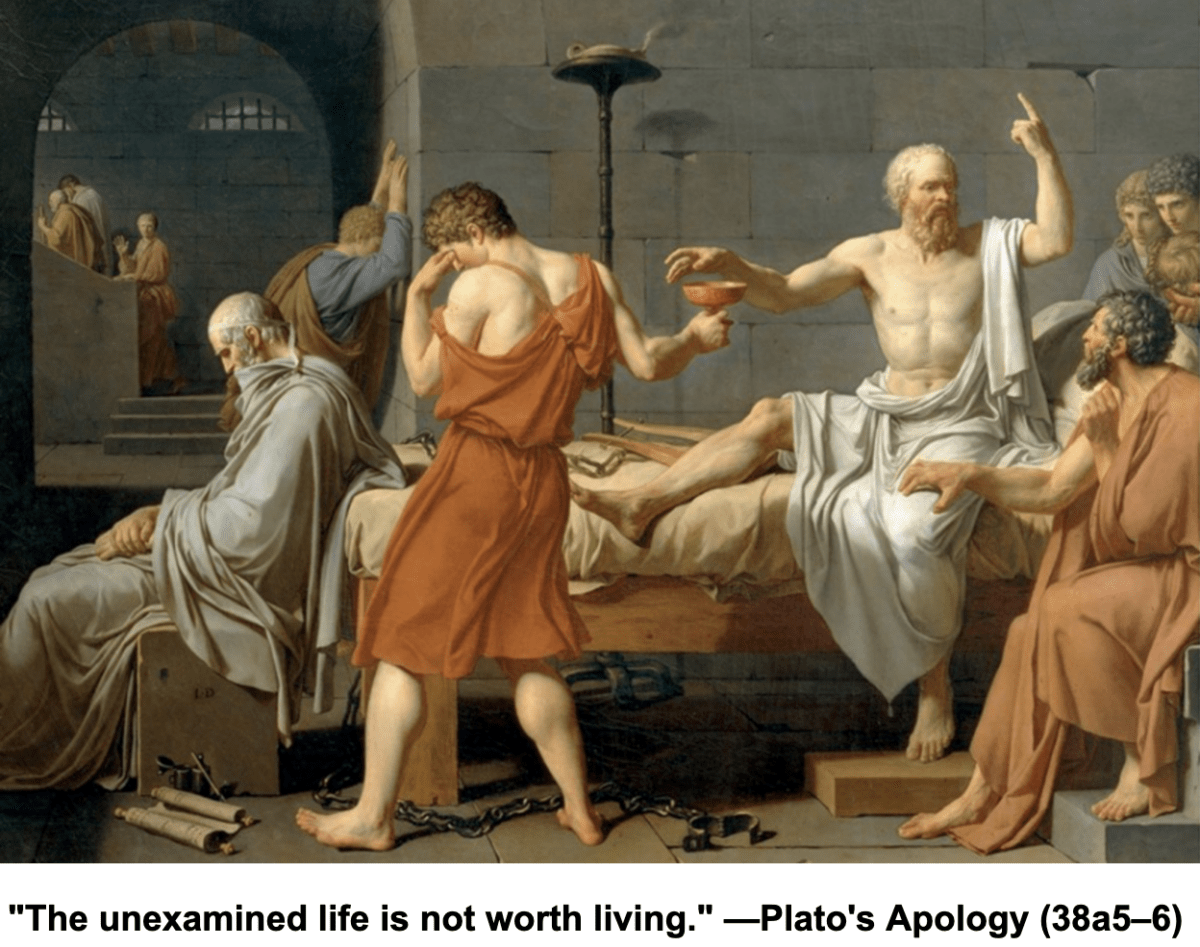
Thank you Eric for this post as we prepare to celebrate Thanksgiving this week. Thanksgiving this year may look and feel very different than we have come to expect. Even under present circumstances, we have much for which we can be grateful. Bruce and I are still awaiting our opportunity to actually move to London to serve our mission. This parable is the foundation for the humanitarian aid that the Church provides in so very many countries around the world. We will be working to expand the reach of the Church- to assist in helping to create fertile ground so that eventually the message of the gospel can be shared with every nation, kindred, tongue and people. The parable of the sower is the pattern to “Feed My sheep both temporally and spiritually. “
Great to hear from you, Linda. You’re right—we do have much to be thankful for. And the Church’s humanitarian aid program is an excellent expression of Christ’s teachings in the Parable of the Sower.
I’m quite confident you will eventually find your way to London. I’ve learned over the years that you are a woman not to be denied!
I am really behind in reading and enjoying your blog but I’m going to catch up.
This is a wonderful post. I have always been bothered by the Parable of the Sower and it now makes much more sense. I also appreciated the snap shot of Chilean history during your mission. It seems especially pertinent now with all that is happening in the USA. Thank (Dankeschon) you much for your ideas and pondering, they make me think (Denken)!